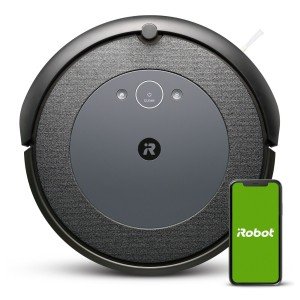The Rise of Robot Vacuum Cleaners in Industrial Settings
Recently, the landscape of industrial cleaning has actually witnessed a substantial change with the introduction of robot vacuum. These automated gadgets are not just a novelty for homes; they have actually gotten traction in warehouses, manufacturing plants, and other industrial environments. This short article checks out the functionality, advantages, and factors to consider of robot vacuum within the industrial context, while answering some often asked questions.
What are Robot Vacuum Cleaners?
Robot vacuum cleaners are automated cleaning gadgets equipped with innovative sensors and innovation that enable them to navigate around spaces, identify dirt, and vacuum surfaces without direct human intervention. In bagless robot vacuum , they are developed to deal with a variety of debris types, assist in routine cleaning schedules, and enhance general functional efficiency.
Table 1: Key Features of Industrial Robot Vacuum Cleaners
| Function | Description |
|---|---|
| Navigation | Utilizes LiDAR or camera-based navigation for exact mapping. |
| Size and Design | Compact and robust style to suit tight areas and hold up against hard environments. |
| Self-Charging | Automatically go back to its docking station for charging. |
| Dustbin Capacity | Bigger dustbin fit for industrial particles sizes and volumes. |
| Programming | Can be set for scheduling and particular cleaning jobs. |
| Data Collecting | Equipped with sensors to gather information for upkeep and cleaning analysis. |
Benefits of Robot Vacuum Cleaners in Industrial Settings
The adoption of robot vacuum includes a myriad of advantages:
Increased Efficiency:
- 24/7 Operation: Unlike human cleaners, robots can operate all the time, adding to continuous cleanliness without downtime.
- Time-Saving: Automated cleaning enables staff members to focus on core tasks instead of cleaning tasks.
Expense Savings:
- Labor Costs: Maintaining a robot vacuum can lower the requirement for a large cleaning personnel, lowering total labor expenses.
- Operational Efficiency: With improved tidiness and minimized downtime due to upkeep problems, organizations can conserve on operational expenses.
Improved Safety:
- Reduced Risk: By decreasing the human involvement in hazardous cleaning environments, the danger of mishaps is decreased.
- Consistent Cleaning: Robot vacuums guarantee that areas are regularly cleaned up, decreasing slip hazards and unhealthy environments.
Increased Flexibility:
- Customizable Cleaning Routes: These devices can be programmed to tidy particular locations or floorings, adapting to altering industrial designs.
- Variety of Surfaces: Industrial robot vacuums can deal with various flooring types, from concrete to tiles, making them flexible.
Environmental Impact:
- Sustainable Cleaning Solutions: Many designs utilize very little water and environmentally friendly cleaning options, assisting in business sustainability efforts.
Table 2: Industrial Applications of Robot Vacuum Cleaners
| Industry | Application |
|---|---|
| Production | Cleaning assembly line and assembly locations. |
| Warehousing | Keeping clean and orderly storage spaces. |
| Food Processing | Ensuring tidiness in sensitive locations to meet health requirements. |
| Pharmaceuticals | Keeping ultra-clean environments for production. |
| Logistics and Distribution | Keeping paths clear for effective operation. |
Challenges and Considerations
While the advantages are substantial, organizations should also think about several difficulties:
- Initial Investment: The upfront expenses of acquiring industrial robot vacuum can be considerable, though long-lasting cost savings may offset this expense.
- Maintenance and Repairs: Regular maintenance is vital to keep the robotic systems functioning optimally, and repair work can incur additional costs.
- Combination: Businesses may require to integrate these makers into existing workflows, which can require time and change.
- Training and Support: Staff might need training to efficiently handle these makers, especially when fixing or shows is needed.
Frequently Asked Questions About Robot Vacuum Cleaners in Industrial Settings
1. Just how much do industrial robot vacuum cost?
The cost can range from a few thousand to tens of thousands of dollars, depending upon specifications, functions, and brand.
2. What types of surfaces can they clean?
Robot vacuum cleaners appropriate for different surfaces consisting of carpets, tiles, concrete, and even some wood floorings.
3. How do they browse complex industrial environments?
A lot of industrial robot vacuums utilize sophisticated navigation systems like LiDAR, cams, and sensing units to map out and adapt to their environments for effective cleaning.
4. Can they clean large areas without human intervention?
Yes, industrial robot vacuums are developed to clean substantial areas with pre-programmed paths and schedules, successfully running autonomously.
5. Are these robots eco-friendly?
Lots of models focus on performance and reduce water use, making them a more ecologically friendly cleaning choice compared to standard techniques.
The intro of robot vacuum into industrial environments symbolizes an exceptional improvement in cleaning technology. With their capability to boost effectiveness, minimize labor expenses, and keep safety, these automated systems are leading the way for smarter and cleaner industrial operations. While difficulties might exist, the long-term advantages and technological advancements are motivating for markets seeking to improve their cleaning procedures. As technology continues to develop, we can expect further innovations in robot vacuum cleaners that will change industrial cleaning practices a lot more.

